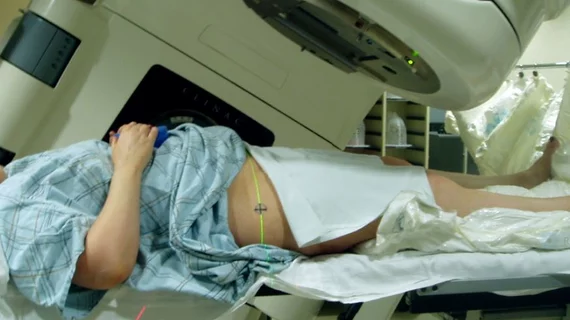Is MRI a suitable alternative to CT for testicular cancer surveillance? Research offers insight
Testicular cancer patients can safely undergo magnetic resonance imaging in lieu of computed tomography scans after surgery without fearing any long-term adverse effects.
That’s according to research published recently in the Journal of Clinical Oncology. The study, Trial of Imaging and Surveillance in Seminoma Testis (TRISST), sought to address the concerns of radiation exposure among patients with stage 1 testicular seminoma, many of whom are still in their reproductive years.
“In this young patient group who are very unlikely to die from their seminoma cancer, minimizing exposure to potentially harmful radiation is important,” corresponding author Fay H. Cafferty, PhD, of the MRC Clinical Trials Unit at University College London, and co-authors explained.
CT surveillance is the standard of care for postoperatively monitoring testicular cancer, but when patients must undergo scans every few months after surgery, accumulative radiation exposure becomes a concern. Magnetic resonance imaging spares patients of ionizing radiation, but data pertaining to its application for postoperative testicular surveillance are limited.
Researchers tested two possible solutions to the radiation exposure conundrum—the first option was to refer patients for MRI scans postoperatively, and the second was to have patients follow a reduced schedule of CT or MR scans after surgery; instead of having seven scans during the first five years after surgery, they would undergo three over a period of three years.
For the study, a group of 669 patients who had undergone orchiectomy for stage 1 seminoma with no adjuvant therapy planned was randomly divided into four imaging groups who completed either seven CTs (6, 12, 18, 24, 36, 48, and 60 months), seven MRIs (same schedule) three CTs (6, 18, and 36 months) or three MRIs. Six-year incidence, as well as relapses (greater than 3 cm), disease-free survival and overall survival were compared for each group.
After the median follow-up of 72 months, 82 patients relapsed. For the groups who completed fewer CT and MR scans, more events (2.5%) were reported compared to the group who underwent seven exams, though the researchers describe the numbers as statistically insignificant. MRI showed a slight edge over CT, with two events occurring compared to CT’s eight.
Participants had a 99% survival rate (at five years) and there were no tumor-related deaths, which led the experts to suggest that surveillance is a safe management approach, regardless of whether CT or MRI is utilized.
“Advanced relapse is rare, salvage treatment successful, and outcomes excellent, regardless of imaging frequency or modality,” the authors wrote. “MRI can be recommended to reduce irradiation; and no adverse impact on long-term outcomes was seen with a reduced schedule.”
More oncology imaging content:
How second opinions from subspecialty radiologists alter cancer care
ACR's thyroid imaging reporting and data system 'dramatically' reduces unnecessary nodule biopsies
Specialized ultrasound can accurately detect prostate cancer, new research shows
These ultrasound features distinguish between COVID vaccine-related and malignant adenopathy

